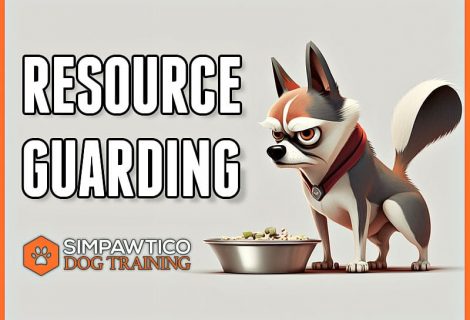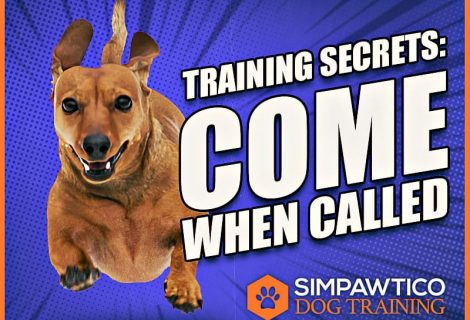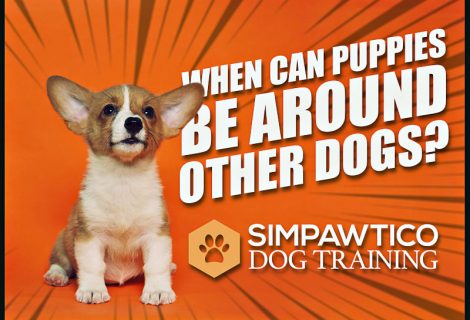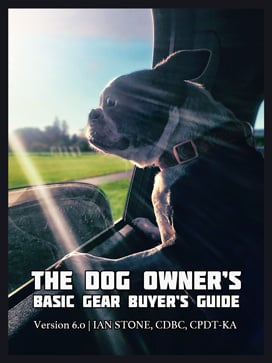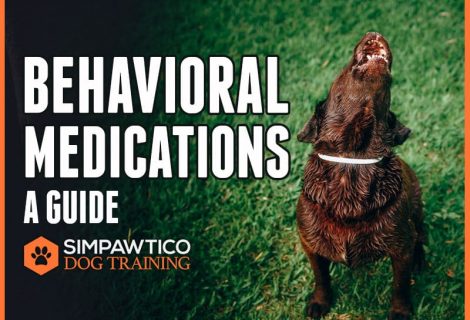Today we’re talking about how to teach your dog to release things in their mouth. Whatever you’re doing right now—DROP IT!—and watch this video.
DROP IT: THE LAST IN THE “HOLY TRINITY”
In one of our previous posts/videos, we looked at the first two pieces of mouth control, which were Take It and Leave It. I highly recommend you check out that post/video too so you can really get all three working together. As I said in that post and video, Take It, Leave It, and Drop it form what I call the “Holy Trinity of Mouth Control.” If you can get those three things dialed in to a high degree, it has a sort of cascade effect on your dog’s manners and makes life so much more pleasant. There’s no more diving for food on the floor, no more gobbling up your fingers when you hand them food or a toy.
You also get polite play sessions even when the dog is jazzed up. Plus, playing teaching games like tug and fetch burn off energy and give your dog mental stimulation. These are also gateways to teaching come, getting offered attention, and immensely improving your handling skills.
DEFINING DROP IT
Let’s look at Drop It, so you understand how we’re working here. Drop It teaches the dog to release things that are in their mouth. “Drop It” is different from Leave It in that it’s for things the dog already has, whereas Leave It is for something they want, but have’t gotten yet. In the best cases Drop It is useful for games, as I mentioned. But in the worst cases this will help you when they pick up something nasty or harmful, and you need them to release it NOW. Drop It is best taught using Lure Reward Training. Like all Lure Reward Trained activities, it follows a 1234 pattern:
- Request
- Lure
- Response
- Reward.
In this case that looks like this:
- Say “Drop It.”
- Lure your dog to drop it.
- Your dog releases the item.
- Immediately say “Yes,” praise, and reward.
We’re going to teach Drop It, with a toy. In this example we’re going to use an interactive toy to play tug, and we’ll use the game to teach Drop It, and improve the work with Take It.
TEACHING WITH TUG
Now, a quick note about tug. There are STILL trainers out there and articles online that adivse you to never play tug with your dog. This is complete rubbish. Tug is a fantastic game to play with your dog. It teaches manners, mouth control, and frustration tolerance. It burns off energy, it provides mental stimulation, and like any kind of play it builds your bond with your dog. However, tug is a game and like any game there are rules, and if the kids don’t play by the rules, well we don’t play. So my tug rules are very simple:
- You can’t put your teeth on me.
- You can’t take the toy unless I say.
- You have to let go of the toy when I say.
In the video you can see a couple of rounds with the Labradoodle, Drake.
HERE’S THE BREAKDOWN
Present the tug toy. Make sure you’ve taught them “Take It” and then enforce that rule so they don’t just reach out and snatch it. Allow your dog to Take it, and play tug for a bit, then teach Drop It with 1234:
- Say “Drop It.”
- Lure the dog to drop it by waggling a high-value treat in front of the nose. Wait it out. This may be immediate, or it may take a second. Just wait.
- The dog releases it.
- Say “Yes!” while you stick the treat in their mouth, and give huge praise. Put the toy behind your back for the time being (don’t tease them with it).
Repeat this sequence. You’re aiming for lightning fast Drop Its. Now you could see Drake getting better as we went. He wasn’t perfect yet, but we’ve already kicked that upward trend into motion. So with good consistent practice like this, I have no doubt that Drake will become a pro. With Take It, Leave It, and Drop It firmly entrenched in his brain, he’ll be one of the most gentle dogs. And, he’ll have a strong Fetch, Recall, and Heel.
MORE PRO TIPS FOR DROP IT
Play sessions should last no more than one to two minutes tops. You want the game always to end before they’ve burned off too much energy to do other things, and you always want to end on your terms, with your dog wanting more. This will keep them in love with the game, which gives you tons of opportunity to teach, practice, and bond. When you say Drop It, you simply immobilize the toy. Don’t pull on it. Don’t wiggle it back and forth. Just keep it from moving. Otherwise, you’re sending conflicting signals by keeping the game going.
Just say “Drop It” once and WAIT. In these early stages, DO NOT REPEAT YOURSELF if your dog doesn’t release. This is how they will learn. The time between when you made the request and presented the lure, to when they actually released the item is called “latency.” As you practice, this latency will shrink until it becomes an immediate response. You get there through patience and repetition, not through nagging.
Also, make sure that the tug toy is put away at the end of the game. I talked about this in the 4 Types of Toys post where I discussed why it’s important for interactive toys to be restricted access.
PHASE OUT THE FOOD
As the latency decreases, and that response time gets faster and faster, you will notice that your dog starts releasing the item before the lure reaches their nose. This is why with Lure Reward Training we say it, then lure it. Although the lure initially causes the action to happen, the dog is soon responding reliably and we no longer need the lure. Also, they learn to anticipate the required action based on the word they hear. So soon, you can say “Drop It” and NOT present the lure. When your dog releases the item, THEN we give them a REWARD from our pocket.
See, now you don’t NEED the food to get them to Drop It, and we’re conditioning them to respond to the verbal request. Refer to our post/video on phasing out treats for more in-depth instruction on that part of the process. In this vein, as we get away from dependence on the food we can start using the continuance of the game as the reward. And in serious situations out in the world we probably won’t have a treat with us in most cases anyway, so that good response without food will be absolutely necessary.
WHAT IS IT GOOD FOR?
The thing to remember is that Drop It is not just a parlor trick. It’s potentially life saving. If your dog picks up something off the sidewalk, or at the park, or in the bathroom, or even in the kitchen there could be serious consequences. Having reliable remote control of your pooch’s mouth could mean the difference between a non-issue and spendy vet bills. Or worse. Incidentally, Drop It is also the command I use for leash biters. Just remember that the moment you NEED a Drop It, is the wrong time to practice it. Put the time in NOW so it’s ready to go in that moment of crisis.
So good luck, and let me know how drop it is goes for you. And if you have some other nifty ways to teach drop it, share them in the comments below. Don’t forget to give us a thumbs up and as always: keep learning, keep practicing, and we’ll see you next time. Thanks for watching!


